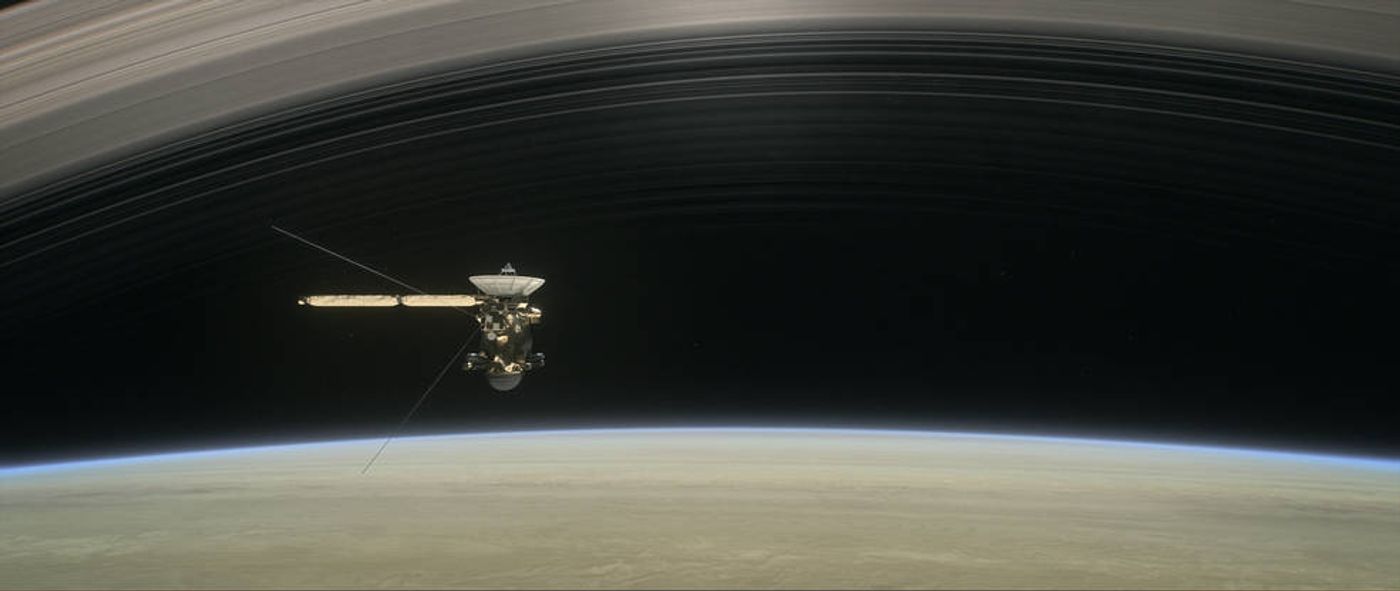Cassini Prepares for its Final Five Close Orbits Around Saturn
NASA’s Cassini spacecraft launched from Earth’s surface 20 years ago, and it reached its destination at Saturn in 2004. Since then, Cassini has provided scientists with valuable information about the planet and its several moons, including Titan.
Image Credit: NASA/JPL-Caltech
Since Cassini’s days are coming to an end, NASA began the probe’s Grand Finale mission almost four months ago. In doing so, the agency commanded the spacecraft to fly in between Saturn and its rings. It's the closest Cassini has ever been to Saturn, but soon, it will get even closer.
Related: First baby steps toward Cassini's Grand Finale are taken
Cassini is preparing for its final five orbits around Saturn, during which NASA will place the probe at altitudes of just between 1,010 and 1,060 miles above Saturn’s clouds. At these incredibly-close encounters, Cassini can investigate Saturn’s atmosphere for its composition.
The goal is to obtain a better understanding of Saturn’s atmosphere for future space missions. NASA plans to revisit Saturn in the future, so Cassini will prime our knowledge about how to equip our next spacecraft.
During these five ultra-close final encounters, Cassini will rely heavily on its thrusters to remain stabilized as it gets closer to Saturn’s dense atmosphere. NASA estimates that the thrusters will operate at 10-60% efficiency based on current computer models.
"Cassini's Titan flybys prepared us for these rapid passes through Saturn's upper atmosphere," said Cassini project manager Earl Maize. "Thanks to our past experience, the team is confident that we understand how the spacecraft will behave at the atmospheric densities our models predict."
On the other hand, if NASA’s wrong about how dense Saturn’s atmosphere is, then it may be necessary to pull Cassini up to a higher altitude to prevent the probe from burning too much fuel during its final orbits.
After the fifth orbit, which will only be half of an orbit, Cassini will plunge into Saturn’s atmosphere as its thrusters work their hardest to keep the communications antenna pointed toward Earth. It's an essential step that will let NASA continue communicating with Cassini in real-time as it burns up in the planet’s atmosphere during entry.
Cassini will go into history books as the first human-made object to ever study Saturn’s atmosphere up close. It’s a big moment for NASA and for scientists who’ve been waiting for this data for so long. Understanding Saturn, including its atmospheric composition, auroras, and magnetic fields among other things, is essential if we are to understand how Saturn and the rest of the solar system formed.
It should be interesting to see what Cassini uncovers during its final moments.
Source: NASA









